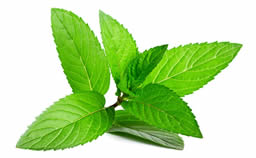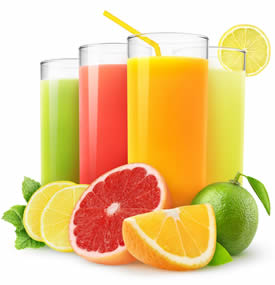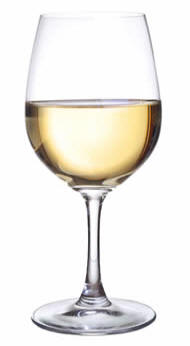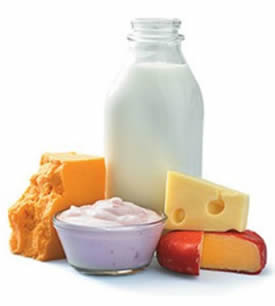|

|
e have all suffered from heartburn or acid reflux at one time or another. Did you know
that over 20% of the population suffers from acid reflux or heartburn at least once a
week? |
That means we have all probably had to plan meals for a passenger or flight crew suffering with
this ailment . . . possibly without even knowing it. Knowing this high number of occurrences, it
might be wise for catering sources to plan an assortment of meals and label them as low risk
meals for heartburn.
The symptoms of heartburn are generally the same with varying degrees. A tight, fiery painful sensation through your chest and throat is primary. This is most often followed by a sour or bitter taste in your throat and mouth that can last for minutes or even hours. Heartburn is caused by acid reflux, which happens when stomach acid is released into the
oesophagus because of either acid damage in the oesophagus or a weakened sphincter
muscle. This occurs when the lower oesophageal sphincter muscle (LES) becomes relaxed and stomach acid splashes up into the
oesophagus and
throat.
Foods to Avoid
when planning for a passenger or flight crew with heartburn or acid
reflux:
Fats, oils,
sweets, chocolate, regular corn and potato chips, high-fat butter cookies, brownies, doughnuts, creamy and oily salad dressings, fried or fatty food in general.
Chocolate . . . I must start with one of my all-time favorites. I have written about the health benefits, about its antioxidant potential, but I am saddened to say it is a well-known heartburn creator.
This is such awful news for chocolate lovers (me included): Chocolate seems to cause more reflux than most other foods. It’s a big whammy in more than one way:
-
Chocolate contains caffeine and other stimulants such as theobromine, which relaxes the sphincter muscle that prevents the flow of acid out of the stomach when not relaxed.
-
Chocolate is high in fat, and will take longer to digest, stays in your stomach longer and potentially increases reflux.
-
Chocolate is also high in cocoa. It is also a natural relaxant, releasing the pleasure hormones in your body. This action can also relax the sphincter. Theoretically, dark chocolate isn’t as bad as high-fat milk chocolate, but let’s face
it - and I'm sorry to say - all chocolate is bad for reflux.
-
Chocolate contains caffeine which is known to trigger heartburn. If you are like me and can’t stand the thought of giving up chocolate try scaling back on the portion to just a nibble at the end of the day. And one further
note . . . don’t eat chocolate on an empty stomach at bedtime.
Avoid Fatty Foods. We are all fortunate when eating on aircraft since fried foods do not travel or reheat as well inflight and are frequently excluded as menu choices. While fried foods may look crispy, they retain a lot of the oil in the coating. If your catering source adds a bit of vinegar to the fry oil, the food will absorb a bit less oil, but, most crust will still become soggy during reheating. Foods high in fat take longer to digest, putting pressure on your stomach and
oesophagus. This increases the risk of acid reflux due to the time your stomach stays full. Instead of fried foods, try grilling, baking or poaching your
foods.
Spicy Foods, Seasonings and
Sauces.
Foods with a fiery, spicy flavor may add some kick to your diet, but you'll feel that kick burning in your chest again when heartburn happens. Spicy foods often pose a problem for those who suffer from heartburn. I don’t know about you, but, I have a taste for the
spicy - the hotter, the better.
The heat found in all peppers from cayenne to
chilli peppers, Thai foods, Mexican food, Indian foods, chili, and any other food that is loaded with pepper or other spices can be a trigger for heartburn. If your passengers or flight crew do suffer from heartburn, they don’t have to give it up, just start by reducing the heat. Easing up on the spiciness could make all the difference since your chefs will know numerous other ways to add flavor without burning off the roof of the mouth with spices.
Although numerous people suffer from heartburn after ingesting spicy foods, they might react to the
chillies, but would never consider that simple pepper could be their trigger. Pepper can be quite spicy. Salt is another big trigger for heartburn. Studies have found that people who ate diets high in salt had a higher risk for developing heartburn. Cut your risk by eating a low sodium diet and limiting your spice amounts.
Peppermint.
 |
Mint, peppermint, spearmint of all types previously consumed as tea or candies are known to settle upset stomachs, but this herb can worsen heartburn.
The numbing effect of mint can relax your
oesophageal sphincter, letting stomach acid leak into your
oesophagus. If you are looking for natural heartburn treatments to replace mint, consider ginger. |
Ginger
is a natural nausea reducing foods. Enjoy ginger tea or even chamomile
before bed to reduce your chance of overnight heartburn.
Fruits, vegetables,
orange juice, lemon, lemonade, grapefruit juice, cranberry juice, tomato, mashed potatoes, French fries, raw onion, potato salad.
|
Be on the lookout for acidic foods. Tomatoes, citrus, salsas. While they might be abundant with healthy nutrients such as lycopene, tomatoes are also highly acidic and likely to cause heartburn in those who are prone to it. High acid foods can trigger heartburn, especially if you eat any of them on an empty stomach. Don’t forget about vinegar used in salad dressings and other foods.
Citrus fruits such as oranges, lemons, limes and grapefruits are also high in acid and irritating to the digestive tract. The extra acid from these foods aggravates reflux and worsens heartburn. Remember that orange juice, lemonade, grapefruit juice, and products made with citrus fruit juices, such as some marinades, will have the same negative effect.
|
 |
If you
just can’t live without acid foods, try to limit the portion size and
combine it with something non acidic.
Other beverages.
liquor, wine, coffee, and tea.
Heartburn is about food choices, and also beverage choices. We all enjoy that glass or two of wine with a meal or a nice refreshing cocktail to complete a great evening or meal.
 |
Beverages at risk include,
but are not limited to, coffee drinks (regular and decaffeinated), caffeinated teas, colas, all carbonated drinks, and excessive alcoholic drinks.
Caffeine boosts the acid in the stomach, alcohol will relax the sphincter muscle and carbonated drinks will bloat the stomach which will lead to heartburn. Remember that tomato and citrus juices frequently used in mixing cocktails was cause heartburn.
If you must provide your passenger and flight crews
with these beverages (not the alcohol for the crew however) suggest them with some food on their stomach and a smaller
portion . . . slip in a smaller coffee mug or offer herbal teas or water. (I know I must have my 2 shots of espresso each day!) Drinking water with meals will dilute stomach acid and making heartburn less likely.
Wine, beer, or cocktails can all trigger
heartburn, ( Red wine and beer are particularly likely to cause acid reflux), especially when they are embedded as part of a large meal. |
If you
offer a meal of steak, creamed spinach or a wonderful cheese soufflé,
and lobster bisque and then alcohol on top of that, your passenger may
be in for trouble. A glass of red wine may not be a big deal on its own,
but if you also have tomato sauce on your pasta , or have a glass of
orange juice in the morning on an empty stomach, it could be a problem.
Like peppermint, alcohol opens the sphincter, allowing the acid to
escape the stomach.
Soda and other carbonated beverages are some of the main causes of acid reflux. The bubbles of carbonation expand inside the stomach, and the increased pressure contributes to reflux. Sodas with caffeine and those that are acidic (almost all) are even worse. In a recent study of colas, of the beverages that were tested, Diet Pepsi , Coke, and Tab, were the most acidic. All carbonated beverages can be a problem for a person suffering with acid reflux and once again plain water is always best.
Dairy.
sour cream, milk shake, ice cream, regular cottage cheese.
Some unexpected heartburn causers are cheese, other full fat dairy foods, nuts, and avocados. What do these foods have in common? They are all high in fats.
|
Don't provide a cheese plate at the end of a heavy meal, instead, eat it earlier in the day when your flight crew and passengers are not already full.
Remember, a dietary recommended serving of cheese is roughly the size of two dice and we as aviation caterers are providing about 6-8 times that amount per person. When serving a cheese plate at the end of a meal, be aware of the fatty cheese, the very sharp flavor cheeses and ones that might not settle well at the end of a meal prior to bed.
Cheese is naturally high in fat. High fat cheeses include cheddar, cream cheese, Gouda, Parmesan, and stilton. Low fat cheeses include cottage cheese, ricotta, and any other types with reduced fat. |
 |
Nuts and
avocado are naturally high in fats also but, good fats, except when your
passenger or flight crew may find that they cause them heartburn.
Unfortunately, this category also includes ice cream, milkshakes, sour
cream, cream sauces, etc.
Now that you understand what to avoid, and if like me, you think there is nothing left to eat, here is a listing of come common foods to suggest as either an ingredient or menu item when planning menus to reduce heartburn potential. The list below is made up of foods that do not relax the sphincter muscle allowing acid to creep back up into the
oesophagus to cause heartburn.
| Food Group |
Foods With Little Potential to Cause Heartburn |
| |
| Fruit |
• Apple, fresh
• Apple, dried
• Apple juice
• Banana |
|
| Vegetables |
• Baked potato
• Broccoli
• Cabbage
• Carrots
• Green beans
• Peas |
|
| Meat |
• Ground beef, extra-lean
• Steak, London Broil
• Chicken breast, skinless
• Egg whites
• Egg substitute
• Fish, no added fat |
|
| Dairy |
• Cheese, feta or goat
• Cream cheese, fat-free
• Sour cream, fat-free
• Soy cheese, low-fat |
|
| Grains |
• Bread,
mult-grain or white
• Cereal, bran or oatmeal
• Corn bread
• Graham crakers
• Pretzels
• Rice, brown or white
• Rice cakes |
|
| Beverages |
• Mineral water |
|
| Fats / Oils |
• Salad dressing, low-fat |
|
When planning a menu for the flight crew member or passenger who suffers from frequent heart burn, it ultimately isn’t this or that specific food consumed. It’s the amount of food eaten at one time. Multiple smaller meals 4-6 during a full day are much less risk than 3 bigger meals. This is one case where bigger isn’t better. No matter what the food is, how good it looks or smells, or how much they like it, eating too much food at once makes heartburn more likely. Try using a smaller plate to control portions and prevent overeating.
Another way to reduce possible heartburn is to eat slowly. The lifestyle of flight crews and passengers, trying to complete a meal in the time allotted while
levelled off at altitude, or while waiting at an FBO for a passenger to arrive, may not be enough time to fully enjoy their meal at the leisurely pace necessary to keep heartburn at bay. Consider the length of flight time when planning your menus selections.
Additionally, Eating too close to bedtime, or eating too large a meal later at night, can contribute to
night time heartburn. If your heartburn is due to flight hours and available meal service times, sitting up in the club chair rather than lying down may help reduce heartburn.
Heartburn can be controlled successfully through diet with proper menu
preplanning for your passengers and flight crews and the suggestions above.
|
|
About Paula Kraft . . .
Paula Kraft is the
founding partner of the DaVinci Inflight Training Institute located in
Fort Lauderdale, Florida and the founder/president of Tastefully Yours
Catering, an aviation specific caterer, located in Atlanta, Georgia for
over 35 years.
Paula is active with
many aviation and catering-related groups including the International
Caterers Association, the International Inflight Food Service
Association and is a board member of Women in Corporate Aviation. She is
the past chair of the NBAA Flight Attendant Committee Caterer’s Working
Group for 15 years perfecting unique catering training sessions for NBAA
conferences and events. Currently, she serves on the NBAA Flight
Attendant Advisory Committee and is a member of the Training and Safety
Subcommittee. Paula was a founding member of the Steering committee for
the creation of a European Flight Attendant Committee and conference and
serves as a subject matter expert to the board of International Standard
for Business Aircraft Handlers (IS-BAH).
|
After founding
Tastefully Yours Catering, she has been offering culinary
and food safety related training to the general aviation
community. With a strong dedication to improving catering
safety, risk mitigation and safe food handling, she
developed and introduced the concept of “catering safety
management systems”. As a certified food safety instructor,
Paula offers catering SMS and culinary classes for all
aviation professionals.
Paula’s
first-hand experience, business acumen, research, and
relationships make her an industry expert - one which allows
her to share information that will help raise the
professional training level for flight attendants today that
will reduce the risk of food-related concerns tomorrow.
|
 |
From Paula . . .
I have coordinated
training programs and clinics for NBAA and EBAA conference attendees for
over 10 years, created mentoring programs for caterers and flight
attendants to broaden their aviation culinary skills, and to assist them
in adapting to the unique challenges and constraints found in catering
for general aviation. I recognize the need for training and have worked
closely with flight departments, flight crews, schedulers and customer
service reps at the FBOs to ensure that catering specific training
provides information and skills necessary to reduce risk while assisting
them in their job duties that include safe food handling, catering
security, accurate transmission of food orders, and safe food
production, packaging and delivery.
I fell into aviation
catering quite by accident. I was the in-house caterer and bakery
supplier for Macy’s department stores in Atlanta when catering was
ordered for a Macy’s customer which was soon to change my life. After
the client enjoyed the catering provided, I was summoned to the client’s
corporate office to provide several of the items delivered through
Macy’s to the executive dining room. Within a week, I was providing food
for the flight department and my first order was for the President of a
foreign country (as I was too be told soon after).
So, here I am, some 35
years later, still loving every minute of every day in aviation
catering.
|

